Scilab at the International CAE Conference 2013: what a great session!

The Scilab Session and Workshop at the 29th edition of the International CAE Conference was a great success! Scilab is the worldwide Open Source reference in numerical computation and simulation software and it has been adopted in all the major strategic and scientific areas of industry and services, such as aerospace, automotive, electronics, energy, defense and finance. The session hosted speakers from all over Europe and India, and the presentations covered both academic and industrial applications. Lea Florentin and Eloy Crespo, from Eramet Research, proposed two approaches to model metallurgical reactors with Scilab. Metallurgical reactors are characterized by their complexity, especially in terms of chemistry, heat transfer, transport phenomena, and thermodynamics; they showed how modeling such systems can lead to an improved understanding of the process and offer the opportunity to optimize the performance of the reactor.
There were two excellent presentations from the field of civil engineering: Sanjeev Gahlot, Govt. India, illustrated an interactive Scilab program for the simulation and the optimization of a 2-dimensional Truss, while Sukumar Baishya, Associate Professor at the North Eastern Regional Institute of Science and Technology, presented a program for the analysis of the allowable bearing pressure of shallow foundations in layered soil. He explained that, on many occasions, the detailed geotechnical characterization of a site may not be possible due to difficult ground conditions and limited time and resources. However, the developed Scilab program is able to utilize input data gathered during site explorations to compute the Bearing Capacity and the Allowable Bearing Pressure and generates an appropriate geotechnical report.
The first speaker from the academic world was Gabriele Santin, from the Padua University, who explained that the theory of Radial Basis Functions (RBF) is of growing importance in the field of approximation, especially when dealing with data coming from scattered samplings in highdimensional spaces. Nevertheless, in certain conditions this method can be unstable and can suffer from ill-conditioning: hence he presented a Scilab implementation of some tools for the fast and stable computation of RBF approximants in a wide class of problems.
Giovanni Conforti, from the Berlin Mathematical School, introduced the main tools that Scilab offers to tackle problems arising from stochastic modeling, describing and implementing a stochastic numerical algorithm to solve elliptic PDEs with a special focus on the heat equation. His algorithm is based on the celebrated Feynman-Kac representation formula.
The last talk of the morning session was presented by Davide Poggiali, Padua University, and it concerned the resolution of a gamma camera in a clinical setting. From a diagnostic point of view, it is useful to know the expected resolution of a gamma camera at a given distance from the collimator surface for a particular setting in order to decide whether it is worth scanning patients with small lesions and to make appropriate corrections. He created a package to obtain the theoretical resolution of a gamma camera at different distances and compared these values with experimental results.
In the afternoon, the Openeering team and Jocelyn Lanusse, from Scilab Enterprises, led the Workshop. The main themes concerned the latest Scilab version, how Scilab can be used for building comprehensive industrial applications using external modules and the Return On Investment using Scilab. The workshop lasted for two hours and the attendees took an active part in the discussion, carefully dissecting each topic.
The Workshop was also the setting for the official launch of the Scilab Black Belt Course, which the Openeering team has carefully designed to cover the full spectrum of Scilab features whilst keeping it compact and yet enriching it with meaningful examples. Moreover, this session also had the pleasure of hosting an introduction to the "Mathematical Desk for the Italian Industry," whose mission is to build a bridge of common interest between the Italian scientific community of applied mathematics and the world of Italian enterprise. The cooperation envisaged is focused in particular on the development of industrial research projects, possibly in the international context of European networks, through effective mediation in the field of scientific and technology transfer based on the role of mathematics.
The Scilab session will return to the International CAE Conference in 2014, where we look forward to meeting you again: stay tuned!
For more information:
Anna Bassi – EnginSoft
info@enfinsoft.it



